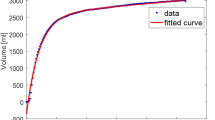Abstract
OBJECTIVE: To determine the accuracy of the history and selected elements of the physical examination in the diagnosis of chronic obstructive pulmonary disease (COPD).
DESIGN: Independent blind comparison of the standard clinical examination (evaluating the accuracy of history, wheezing, and forced expiratory time [FET]) with spirometry. The gold standard for diagnosis of COPD was a forced expiratory volume at 1 second (FEV1) below the fifth percentile (adjusted for patient height and age).
SETTING: Seven sites in 6 countries, including investigators from primary care and secondary care settings.
PARTICIPANTS: One hundred sixty-one consecutive patients with varying severity of disease (known COPD, suspected COPD, or no COPD) participated in the study.
MAIN RESULTS: One hundred sixty-one patients (mean age 65 years, 39% female, 41% with known COPD, 27% with suspected COPD, and 32% normal) were recruited. Mean (±SD) FEV1 and forced vital capacity were 1,720 (±830) mL and 2,520 (±970) mL. The likelihood ratios (LR) for the tested elements of the clinical examination (and their P values on x 2 testing) were: self-reported history of COPD, 5.6 (P<.001); FET greater than 9 seconds, 6.7 (P<0.01); smoked longer than 40 pack years, 3.3 (P=.001); wheezing, 4.0 (P<.001); male gender, 1.6 (P<.001); and age over 65 years, 1.6 (P=.025). The accuracy of these elements was not appreciably different when reference standards other than FEV1 below the 5th percentile were applied. Only 3 elements of the clinical examination were significantly associated with the diagnosis of COPD on multivariate analysis: self-reported history of COPD (adjusted LR 4.4), wheezing (adjusted LR 2.9), and FET greater than 9 seconds (adjusted LR 4.6). Area under the receiver operating characteristic curve for the model incorporating these 3 factors was 0.86.
CONCLUSIONS: Less emphasis should be placed on the presence of isolated symptoms or signs in the diagnosis of COPD. While numerous elements of the clinical examination are associated with the diagnosis of COPD, only 3 are significant on multivariate analysis. Patients having all 3 of these findings have an LR of 59 (ruling in COPD); those with none have an LR of 0.3 (ruling out COPD).
Similar content being viewed by others
References
McAlister FA, Straus SE, Sackett DL, on behalf of the CARE-COAD1 Investigators. Why we need large, simple studies of the clinical examination: the problem and a proposed solution. Lancet. 1999;354:1853–7.
Holleman DR, Simel DL, Goldberg JS. Diagnosis of obstructive airways disease from the clinical examination. J Gen Intern Med. 1993;8:63–8.
Holleman DR Jr., Simel DL. Does the clinical examination predict airflow limitation. JAMA. 1995;273:313–9.
Straus SE, McAlister FA, Sackett DL, Deeks J, on behalf of the CARE-COAD1 Investigators. The accuracy of the patient history, wheezing, and laryngeal measurements in diagnosing obstructive airways disease. JAMA. 2000;283:1853–7.
Sapira JD. The Art and Science of Bedside Diagnosis. Munich: Urban and Schwarzenberg; 1990.
Holleman DR, Simel DL. Does the clinical examination predict airflow limitation. JAMA. 1995;273:313–9.
Badgett RG, Tanaka DJ, Hunt DK, et al. Can moderate chronic obstructive pulmonary disease be diagnosed by historical and physical findings alone. Am J Med. 1993;94:188–96.
Schapira RM, Schapira MM, Funahashi A, McAuliffe TL, Varkey B. The value of the forced expiratory time in the physical diagnosis of obstructive airways disease. JAMA. 1993;270:731–6.
American Thoracic Society. Lung function testing: selection of reference values and interpretative strategies. Am Rev Respir Dis. 1991;144:1202–18.
Crapo RO, Morris AH, Cardner RM. Reference spirometric values using techniques and equipment that meet ATS recommendations. Am Rev Respir Dis. 1981;23:659–64.
Feinstein AR. Clinical biostatistics XXXIX. The haze of Bayes, the aerial palaces of decision analysis, and the computerized Ouija board. Clin Pharmacol Ther. 1977;21:482–96.
Spiegelhalter DJ, Knill-Jones RP. Statistical and knowledge-based approaches to clinical decision-support systems, with an application in gastroenterology. J R Statist Soc. 1984;147:35–77.
Straus SE, McAlister FA, Sackett DL, on behalf of the CARE group. Clinical assessment of the reliability of the examination (CARE). ACP J C. 2000;133:A11–12.
Author information
Authors and Affiliations
Consortia
Corresponding author
Additional information
SES, DLS, and JJD were supported by the NHS Research and Development Programme, United Kingdom; SES is supported by a Career Scientist Award from the Ontario Ministry of Health and by the knowledge Translation Program at the University of Toronto; FAM is a Population Health Investigator of the Alberta Heritage Foundation for Medical Research and was supported by the Medical Research Council of Canada.
Rights and permissions
About this article
Cite this article
Straus, S.E., McAlister, F.A., Sackett, D.L. et al. Accuracy of history, wheezing, and forced expiratory time in the diagnosis of chronic obstructive pulmonary disease. J GEN INTERN MED 17, 684–688 (2002). https://doi.org/10.1046/j.1525-1497.2002.20102.x
Issue Date:
DOI: https://doi.org/10.1046/j.1525-1497.2002.20102.x




